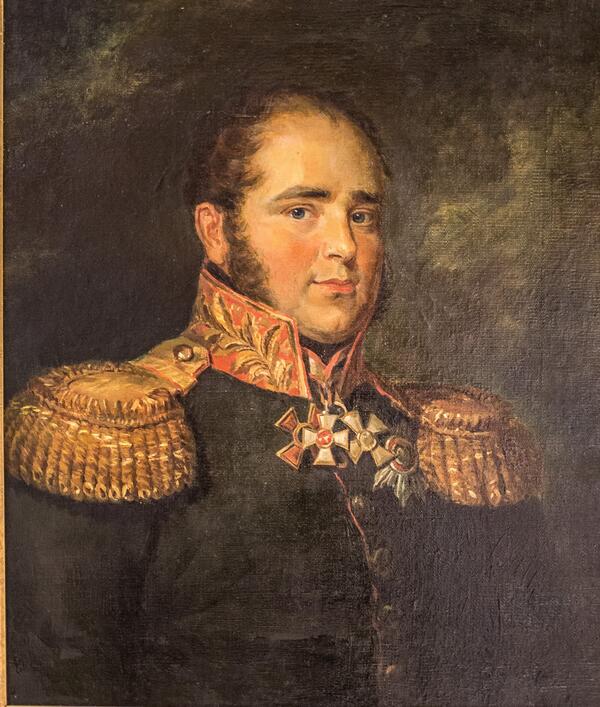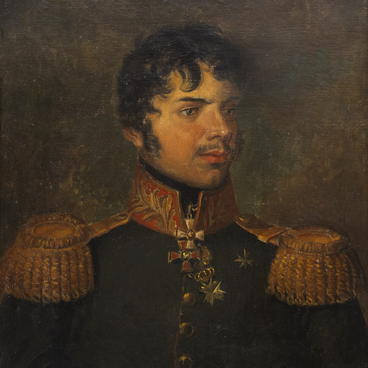Karl Fyodorovich Baggovut (Karl Gustav von Baggehufvudt) was a nobleman from Estonia. In 1779, he was accepted for service as a second lieutenant in the Tobolsk Infantry Regiment.
Three years later, he participated in battles with the Crimean Tatars, in the late 1780s and early 1790s — with the Turks, as well as with the Poles. In 1797, Karl Baggovut was appointed commander of the 14th Jaeger Regiment, and in 1799 promoted to major general.
In 1801, Karl Baggovut took command of the 4th Jaeger Regiment. In the campaign of 1806–1807, for his efforts in Pultusk, he was awarded the Order of St. George, 3rd class, and for Preissisch-Eylau, where he got a concussion caused by a cannonball, — the Order of St. Anna, 1st class.
In 1807, Baggovut was awarded the rank of lieutenant general. In 1808, he led the 5th Infantry Division. In the campaign of 1812, he commanded the Second Infantry Corps. In the Battle of Borodino, when General Nikolay Alexeyevich Tuchkov was fatally wounded, he took command of the troops near the village of Utitsy. For distinction in the battle, Karl Baggovut was awarded the Order of St. Alexander Nevsky, but he did not receive it in time before his death.
In the Battle of Tarutino, he commanded two corps and led the vanguard. The general was killed by one of the first shots fired by a French battery. Karl Baggovut was buried in Kaluga. He became one of the participants in the Napoleonic Wars, whose portraits were painted by the English artist George Dawe for the Military Gallery of the Winter Palace in the 1820s.
In the portrait, Baggovut is depicted in a general’s military uniform of the 1817 model with the star of the Order of St. Alexander Nevsky, the badges of the Orders of St. George, 3rd class, St. Vladimir, 3rd class, and the Red Eagle (Prussia). Dawe, as in many of his posthumous portraits, “dressed” the general in the uniform established for this rank at the time of the portrait’s creation.
The general killed in the Patriotic War could not pose for the artist, and, obviously, when painting the portrait, Dawe used some kind of lifetime drawing or miniature depicting Baggovut. The reproduction from the collection of the Borodino Museum-Reserve was made by Emil Borisovich Ryabichev in 1956.


